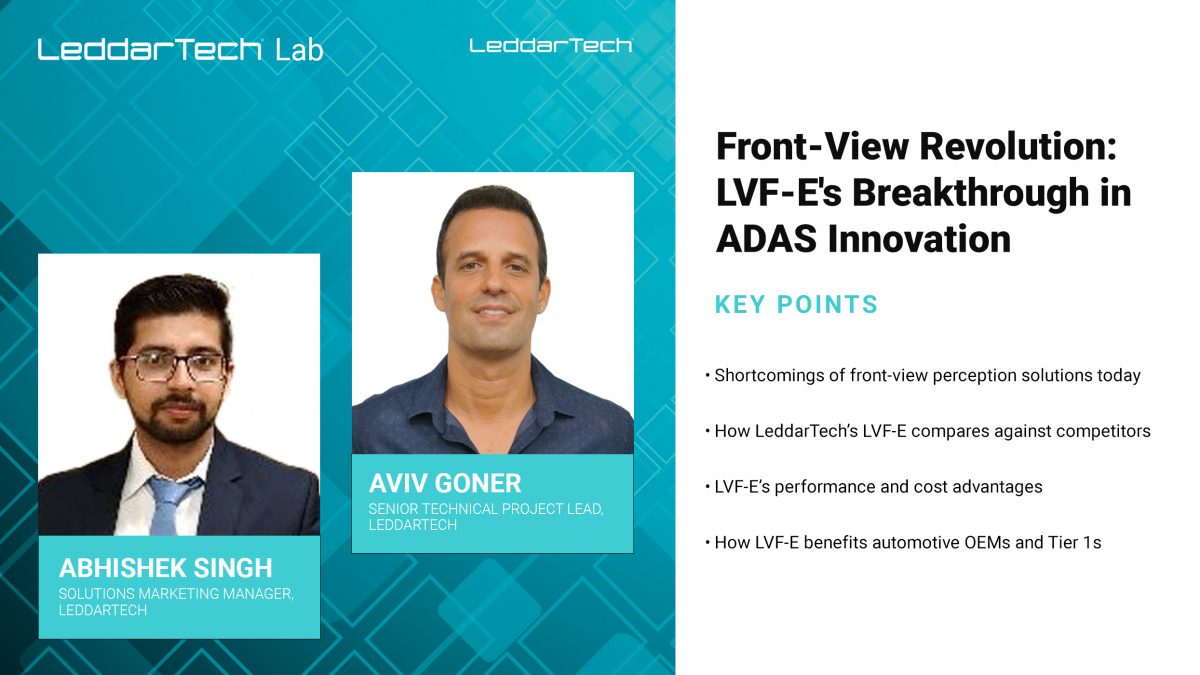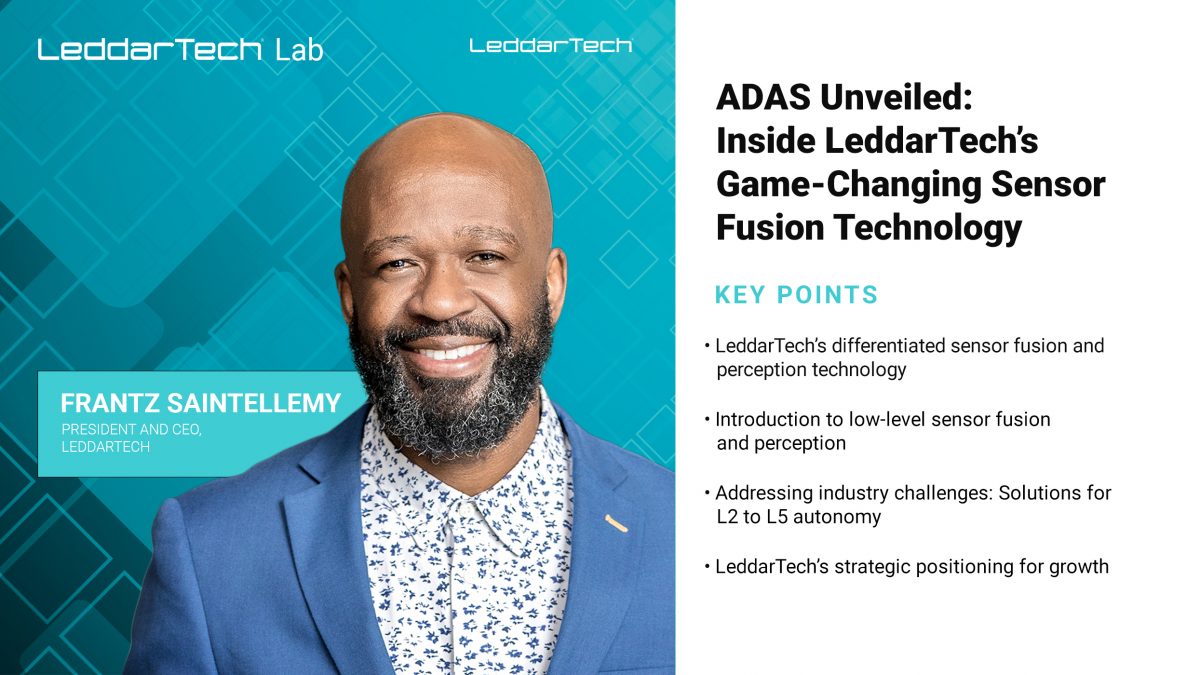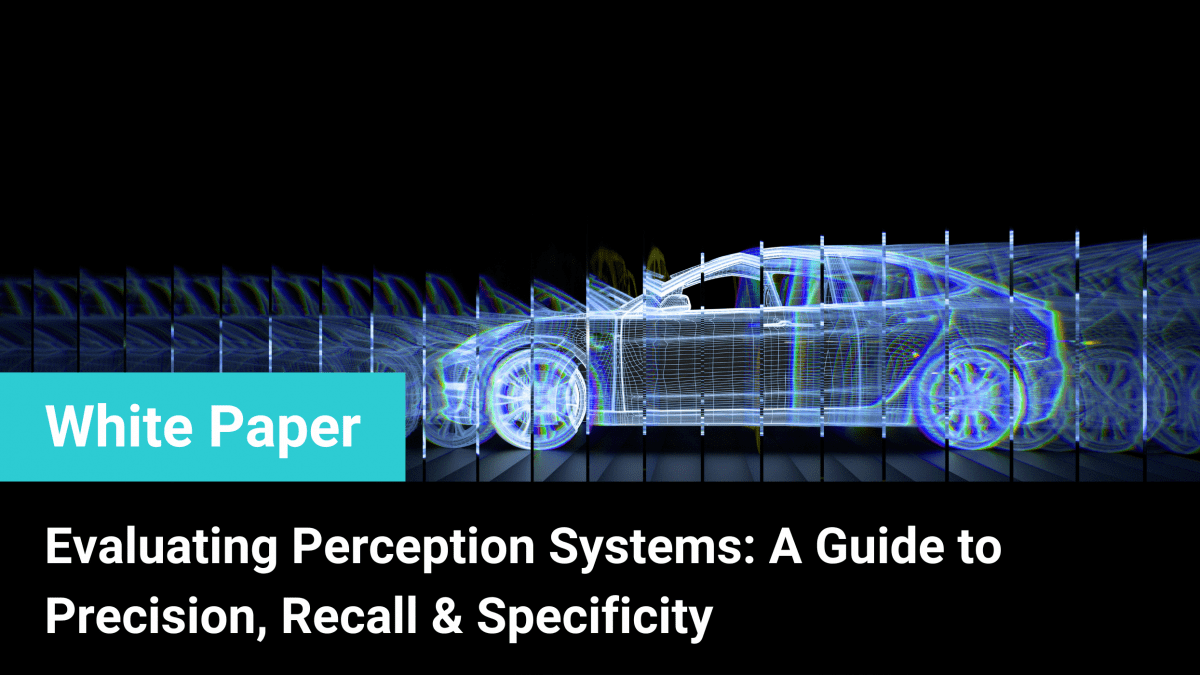Decoding the New China NCAP Safety Standards
In this episode of the Lab podcast, we take a deep dive into China’s 2024 New Car Assessment Program (China NCAP) and its evolving approach to vehicle safety. Host Michelle Dawn Mooney is joined by Clive Szeto, Senior Director at LeddarTech Asia, to break down what the new standards mean for the automotive industry—particularly in the realm of ADAS (advanced driver-assistance systems). The discussion covers key updates such as expanded testing protocols, new requirements for detecting vulnerable road users, and how ADAS technologies are evaluated in challenging conditions. Whether you’re in automotive or just curious, this episode offers an in-depth learning opportunity.
Podcast Transcript
Michelle: Hello, and welcome to the Lab podcast for all things mobility, ADAS, AD, and the tech and trends driving the automotive space. I’m your host, Michelle Dawn Moody. And today, I am joined by Clive Szeto, senior director of LeddarTech Asia, to talk about China NCAP 2024 decoding the new safety standards. Clive, thank you so much for being here. Good to see you again.
Clive: Hello. Good to see you.
Michelle: Yes. Yes. We saw each other at CES, a year or so back, but you’re here to talk about some exciting things. There always are so many things happening in this industry. But before we kind of dive in there, can I ask you, Clive, to give us a brief bio if you wouldn’t mind?
Clive: Yeah. Sure. I have been with LeddarTech this company for six years. So, I’m responsible for Asia business development and sales activity. So at the moment, of course, you may know that we focus a lot, on the AI software, the, sensor fusion perception. And, we are all the way we’re looking for opportunity in the passenger car, commercial vehicle market.
Michelle: Perfect. And we have a lot to get to, so let’s jump in. Let’s start here, Clive. What is C-NCAP, and how does it influence vehicle safety standards in China?
Clive: Right. Thank you. C-NCAP is China’s new car assessment program launched in 2006, to evaluate vehicle safety based on the local traffic condition and driving patterns. It provides one to five STARs safety ratings to help customers make informed decision and encourages manufacturer to improve safety features.
The program start with, packs of safety to understand how capable a vehicle’s mechanical design is at mitigating injuries.
It has now evolved to include advanced testing for active safety technologies such as ADAS to align with global safety standards.
Increasingly, there is movement towards not just mitigating injuries, but preventing pressures from happening in the first place through ADAS.
Well, the latest addition of C-NCAP was launched in January 2024.
Michelle: That’s wonderful to hear because if we can prevent those crashes altogether, how amazing. Seems very important. Yep. Yeah. What are the key enhancements then in C-NCAP 2024, especially for ADAS systems?
Clive: C-NCAP 2024 can be broken down into three main categories, occupant protection section that includes vehicle crash tests, VRU protection section that is a combination of active and passive safety tests.
The active safety test of which ADAS plays a key role that includes three things, expand AEB testing, covers car to car, pedestrian, and two wheeler scenarios, including occluded and nighttime conditions.
Then DMS, the driver monitoring system, it evaluates driver’s fitness and attention to prevent accidents caused by fatigue and distraction.
RFR, road feature recognition.
It tests system like traffic sign recognition to ensure compliance with speed limits and other road signs.
There are some new ADAS feature including testing for, well, a lot of terms. Right? ELK, emergency lane keeping, BSD, blind spot detection, RCTA, rear cross traffic alert.
Michelle: We’re using the whole alphabet today, Clive. We’ve got a lot of acronyms here. I have to tell you just before we go on, the driver monitoring systems or DMS because we all know what it’s like to be behind the wheel sometimes, not as alert as we are other times. It’s it’s just amazing to think of that aspect of things. So we know that VRUs, throwing some more, letters at you, are overrepresented in fatalities and serious injuries. So how does C-NCAP address vulnerable road user or VRU protection? And can you explain what challenges existing systems face with that?
Clive: The challenges, are as follows. So he said, historically, C-NCAP testing prioritize occupant safety with VRUs such as pedestrians, cyclists, and motorcyclists receiving limited attention.
Thankfully, regulatory frameworks and testing protocols are now evolving to address this gap.
Another key barrier to safeguarding VRUs has been the technical limitation of existing ADAS. Many perception system struggle to detect VRUs reliably, due to the challenges such as occlusion, failures to detect smaller and irregularly shaped road users and visual classification errors.
So you you heard the, the word perception. And, since LeddarTech works on this, so we may have a chance to further elaborate, how we can help address all those challenges. So the update to NCAP 2024 regulations prioritize the safety of VRU by integrating active safety technology and passive safety enhancements.
On the active safety side, related to AEB for VRU, the revised protocol, evaluates the vehicle’s ability to detect and avoid collision with pedestrian and cyclists, including occlude scenarios.
The AEB for VRU is also now going to be test in day and night, ensuring ADAS system perform reliably in all lighting condition. And on the passive safety side, C-NCAP 2024 tests for head impact and leg impact to understand the potential severity of injury on the VRU due to an accident.
Michelle: So now we’re gonna get to the good part, LeddarTech playing a role here. Tell me about that role in meeting C-NCAP 2024’s ADAS requirements.
Clive: Thanks for asking this question. It really gives us an opportunity to elaborate how we we can help.
LeddarTech AI based low level sensor fusion and perception technology delivers high performance cost effectively contributing to improve performance on end cap test scenarios.
There are key contributions like, extended detection range. It doubles the effective range of object detection crucial for AEB and other collisions and avoidance system.
Superior VRU detection, it detects occlude pedestrians and cyclists even in challenging conditions. Robust performance in adverse conditions, It ensures reliable operation in rain, snow, fog, and low light environments. Then, good recognition of cut in and cut out events. The system catches the cut in and cut out events being completely aware of its surrounding all the time. And, fewer false alarm. The perception system performs more accurately, resulting in more consistent performance and fewer accidents.
All these performance advantages contribute to a more robust ADAS feature set that works better and more reliably.
And, additionally, we do this with reduced system cost by requiring fewer sensors while maintaining high performance. And I think our customer will all love this because, you know, low cost is very important.
Michelle: Absolutely. I mean, the priority of course is safety, but at the end of the day, we all have to worry about the bottom line. Right? So I mean, this is huge to to have a win win and and get the safety aspect and then also have that that cost cutting aspect as well. So, Clive, there are a lot of moving parts here, literally and figuratively.
Clive: How does C-NCAP test ADAS features like automatic emergency braking, AEB, and lane keeping assist or LKA. Throw it in the acronyms there.
Yeah. We did it to AEB testing.
It includes car to car, pedestrian, and two wheeler scenarios.
It tests for true and false reactions to ensure system do not trigger unnecessarily. It evaluates performance in occlude and nighttime conditions.
And then related to LKA testing, it checks how well the vehicle stays in its length, both with solid and dashed line. There is a limit. If the vehicle crosses the limit, it fails the test. Several repetitions are done to better understand the vehicle’s abilities.
It also includes ELK, emergency lane keeping testing, to perform to prevent collisions when deviating into adjacent links.
Michelle: So we know that, you know, these rules and regulations and the changes we see in that area are made to make things better, to make things safer, but it’s not always an easy ride, and I’ll say pun intended maybe there. What are the challenges for automakers in meeting C-NCAP 2024’s ADAS requirements?
Clive: Okay. Number of challenges, I will go through one by one. Cost pressures while integrating high performance ADA system while keeping costs low is a significant challenge, of course. And, adverse condition performance, ensuring system work reliably in rain, snow, fog, and low light condition as complexity.
False alarm reduction, minimizing force triggers in AEB and other system is critical for consumer trust and safety.
Complex testing protocols. The expanding scope of AEB, DMS, and RFR testing requires advanced sensor and software capability. However, not many OEMs or our customers have these capabilities in house.
Specialists like, our company, LeddarTech, come in play here as our sole focus is on agents and AD enhancement and enablement. Time to market. The China automotive sector is characterized by rapid pace of development and change that brings time to market challenges.
How does an OEM bring new features to the market quickly? Again, LeddarTech helps customer by proposing a solution that’s already been embedded on a chip, significantly reducing time to market. Our front end surround view solution are available in a pre ported form embedded on TI, Texas Instruments, chips.
Michelle: We’ve covered a lot of territory, Clive, and, I think we could talk about this for a few hours and still not really talk about everything that is involved with all of this. But as we close-up here, because we’re almost out of time, any final thoughts that you would like to leave listeners with today?
Clive: Oh, yes. Reach out to myself, LeddarTech to learn more about how we can help you, implement high performing ADAS AD capabilities. We are at events globally and with our LeddarNavigator, our demo car, we could go on the demo ride to see the solution in action on the road in real time.
Michelle: And nothing really beats that, right, to see it actually in real time and and to witness it for yourself. Clive Szeto, thank you so much for joining us. As I said, a lot of information covered here today, and, of course, you can visit LeddarTech website for more information on everything that we talked about and much more. Appreciate you being here. Appreciate your time, Clive.
Clive: You’re welcome. Thank you very much.
Michelle: And that is gonna do it for our discussion on the enhancements in C-NCAP for ADAS systems and how LeddarTech is driving innovation in road safety. Wanna thank you for joining us. We look forward to exploring more exciting topics in the future. I’m your host, Michelle Dawn Mooney. Until next time, stay safe, and we will see you soon.






